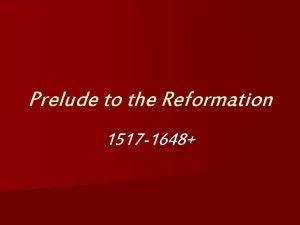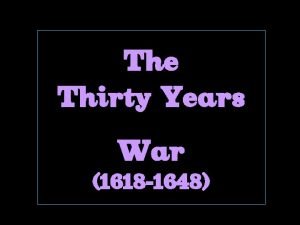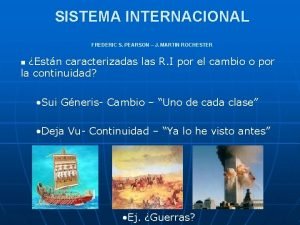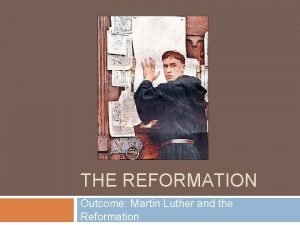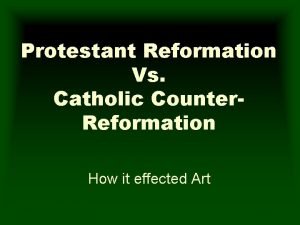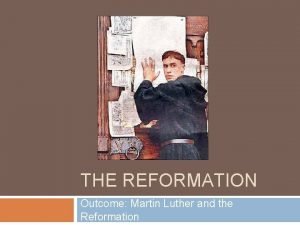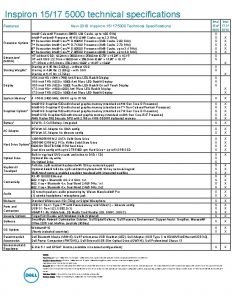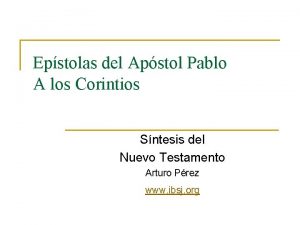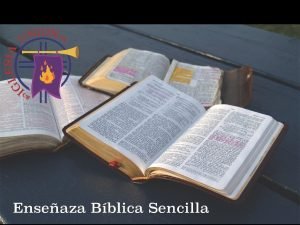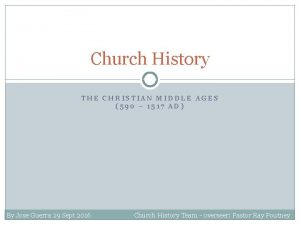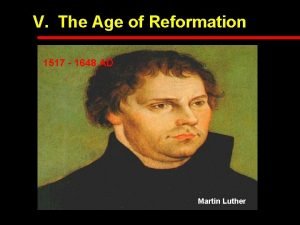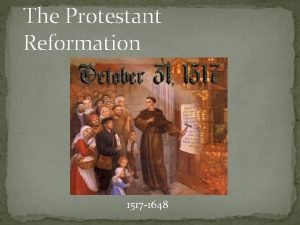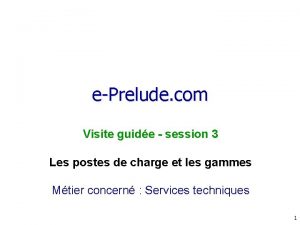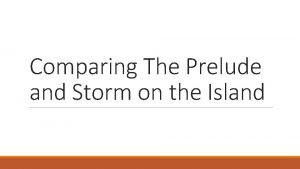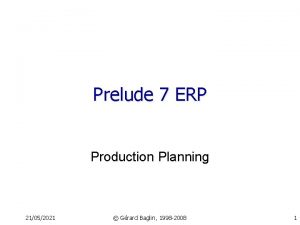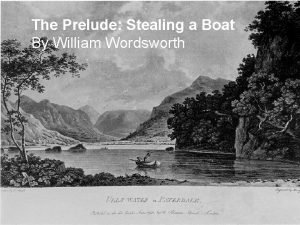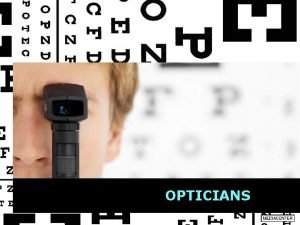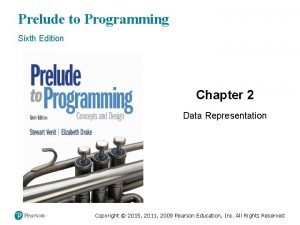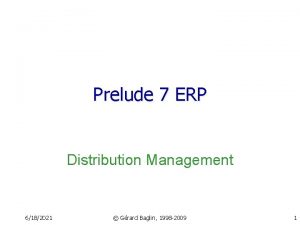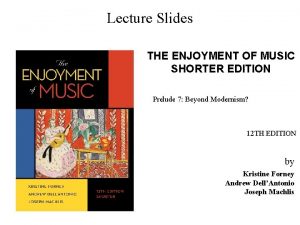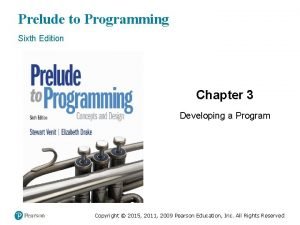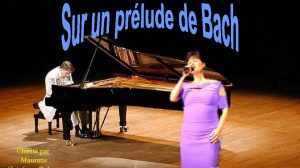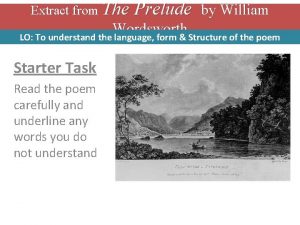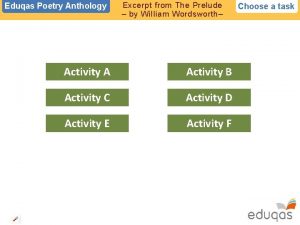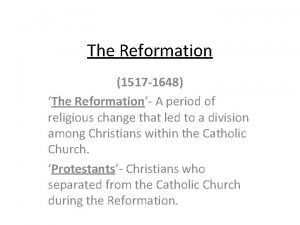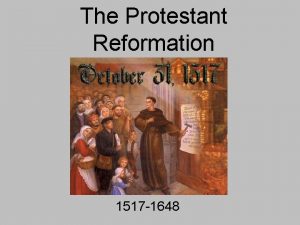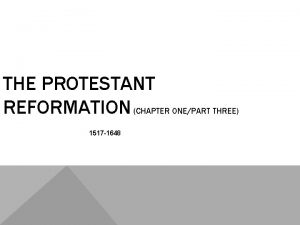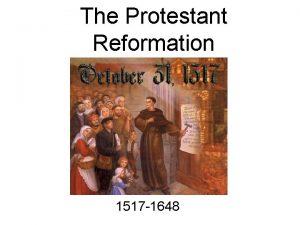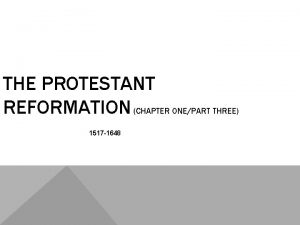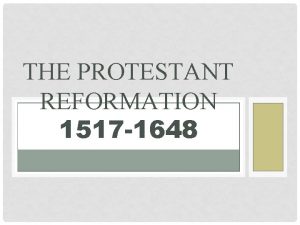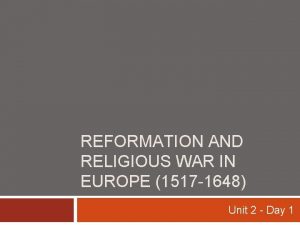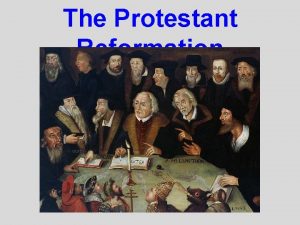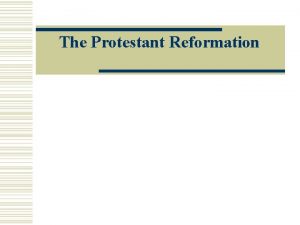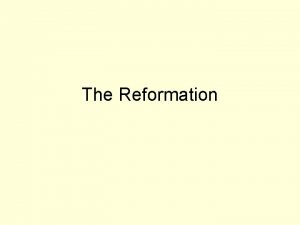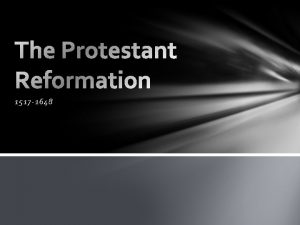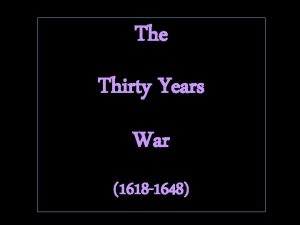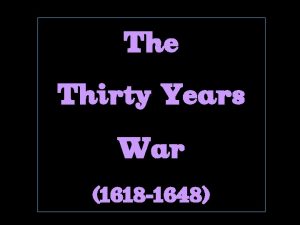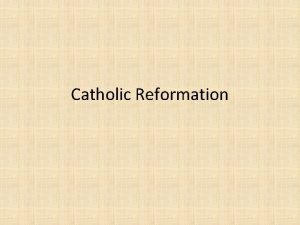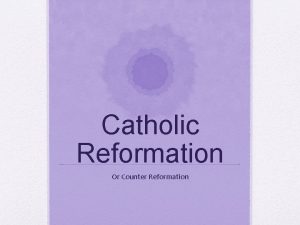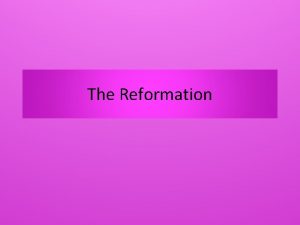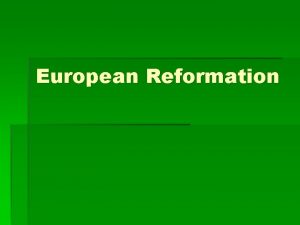Prelude to the Reformation 1517 1648 Consequences n





























- Slides: 29

Prelude to the Reformation 1517 -1648+

Consequences n n n n Ushered in a new individualism Stricter personal morality There was a Catholic reformation as well From a single church, Europe would become a collection of churches (mostly state churches) Who/what is the source of religious authority? Tremendous impact on the world The changes affected all aspects of life Inaugurated a period of tremendous bloodshed

Albrecht Durer ‘s Last Judgment, 1510

Prelude to the Reformation n The revival of religious piety took place within the framework of the “holy mother church”

Prelude to the Reformation n Christian/Northern Humanism n Desiderius Eramus (1466 -1536) – Emphasis on education – Return to the classical, Christian sources – Handbook of the Christian Knight (1503) Christianity guiding philosophy not a system of dogmatic beliefs § Internal rather than external § “laid the egg that Luther hatched” n Thomas Moore n n Modern Devotion Thomas à Kempis – The Imitation of Christ – Utopia

Fertile Ground for the Reformation n Rise of secularism, individualism, humanism n The Renaissance challenges Church hegemony (influence) n Rulers challenge Church power n Printing press spreads ideas n Northern merchants resent paying church taxes

What is the path to salvation? n The Church – The church was an essential intermediary. – The sacraments and good works n The Alternative – People can be saved by their faith in God and love for him – Emphasis on inward and personal belief n External vs. internal forms of religion

Luther Leads the Reformation n Martin Luther’s protests over abuses in the Catholic Church led to the founding of Protestant churches

Forgiveness of Sin n 1. Repentance (vs. penance) n 2. Confession n 3. Restitution – Treasury of Merit n 4. God’s forgiveness

Causes of the Reformation n Criticisms of the Church – Too preoccupied with temporal concerns – Corrupt religious leaders – Extravagant popes – Sale of indulgences – Poorly educated priests

Luther Challenges the Church n October 31, 1517 – Luther posts his 95 Theses n Luther’s ideas circulate throughout Germany n The Reformation begins n The Reformation rejects the pope’s authority

Church and State n Doctrinal Issues – Justification by faith – Authority of Scripture – “Priesthood of all believers” n State Churches n New Religious Services “No longer were [good works] merit-earning; they were now divinely established signs signifying the promise of salvation” (page 353)

The Response to Luther n Pope Leo X issues decree to excommunicate Luther (1520) n Diet of Worms n Luther refuses to take back his statements and is declared an outlaw

Emperor’s Opposition n Charles V = Holy Roman Emperor n Issues Edict of Worms (1521) declaring Luther an outlaw– don’t help him n Some German princes choose to protect Luther n Luther’s followers begin a separate religious group – Lutherans

Response to Luther n Peasant’s Revolt – Peasant’s demand an end to serfdom – Princes crush revolt – 100, 000 people die – Luther’s reaction? n Germany at War – Catholics v. Lutherans – Peace of Augsburg (1555)– princes choose religion for their state



End Reading #1

England Becomes Protestant n Henry VIII – Has a daughter – Wants a son – Marries six times – Wants a divorce n Breaks with the Church – Supremacy law – King is head of England’s Church

Catherine of Aragon m. 1509 - 1533 Divorced Anne Boleyn m. 1533 - 1536 Executed Jane Seymour m. 1536 - 1537 Died Anne of Cleves m. 1540 Jan. - July Divorced Kathryn Howard m. 1540 - 1542 Executed Katherine Parr m. 1543 - 1547 Widowed

England Becomes Protestant n Consequences of Henry’s Changes – Has 3 Children – – Mary, Elizabeth, Edward – 1 Catholic 2 Protestant – Religious turmoil follows his death

England Becomes Protestant n Elizabeth and the Church of England – Forms the Anglican Church – Combines Catholicism and Protestantism to appeal to moderates

The Reformation n Other Reformers – John Calvin – (Geneva, Switzerland) § Sinful by nature – cannot earn salvation § God chooses who will be saved – predestination § Ideal government is a theocracy – rule by religious leaders § Calvinism § Followers in France = Huguenots

The Reformation n Other Reformers – Huldrych Zwingli (Switzerland) § Combined Luther’s ideas with Humanism § Called for a return to a personal faith – Anabaptists § Believed in separation of church and state § Opposed war (pacifists) § Believed only those who could choose could be baptized

Catholic Reformation (Counter Reformation) n Effort to stop Protestant gains and reform the Catholic Church – Curtailed selling of Church offices and religious goods – Bishops required to live in their diocese rather than Rome – Priests were required to improve their images by dressing neatly, being well educated, strictly celibate and active in the parish

Catholic Reformation n Attempts at Compromise – Colloquy at Regensburg – Compromises were rejected by conservatives n Founding of the Jesuits – Founded schools throughout Europe – Convert non-Christians to Catholicism – Stop the spread of Protestantism

Council of Trent (1545 -1563 Church’s interpretation of the Bible was final Scripture and tradition were of equal authority Only the church could interpret Scripture Confirmed celibacy Confirmed purgatory Good works and faith needed for salvation Seven sacraments were considered necessary Indulgences were a valid expression of faith but their sale was prohibited n Use Inquisition to seek out heresy n n n n

Legacy of the Reformation n Catholic Church is unified n Power of the Catholic Church lessens n Protestant denominations grow n Questioning of beliefs brings about intellectual ferment n Public education for boys and girls

Was it a reformation or a revolution?
 Branches of catholicism
Branches of catholicism Prelude to reformation
Prelude to reformation Bohemian phase
Bohemian phase Martin rochester
Martin rochester The reformation outcome: martin luther and the reformation
The reformation outcome: martin luther and the reformation Protestants vs catholics
Protestants vs catholics The reformation outcome martin luther and the reformation
The reformation outcome martin luther and the reformation Dell inspiron 1517
Dell inspiron 1517 Resumen del libro de corintios
Resumen del libro de corintios 31 octubre 1517
31 octubre 1517 The medieval church (590-1517 ce)
The medieval church (590-1517 ce) 1517 ad
1517 ad Holy roman empire 1517
Holy roman empire 1517 E-prelude
E-prelude Storm on the island structure
Storm on the island structure Prelude 7 erp
Prelude 7 erp Prelude stealing the boat
Prelude stealing the boat Specsavers prelude
Specsavers prelude Prelude to programming 6th edition
Prelude to programming 6th edition Eprelude
Eprelude Sequential circuits prelude
Sequential circuits prelude Prelude erp
Prelude erp Chapter 68 underscoring meaning
Chapter 68 underscoring meaning The prelude annotated
The prelude annotated E-prelude.com
E-prelude.com Prelude to programming 6th edition
Prelude to programming 6th edition Maurane sur un prélude de bach analyse
Maurane sur un prélude de bach analyse Prelude extract
Prelude extract Eprelude
Eprelude Excerpt from the prelude
Excerpt from the prelude

